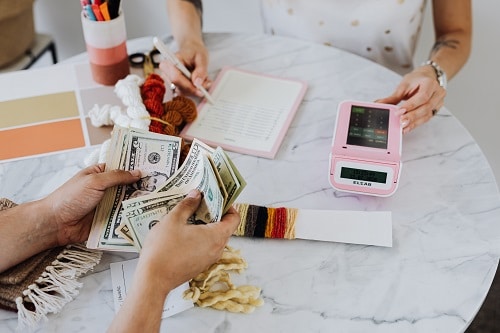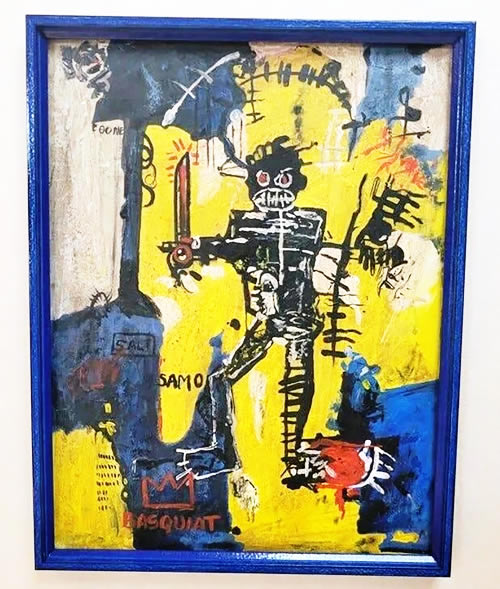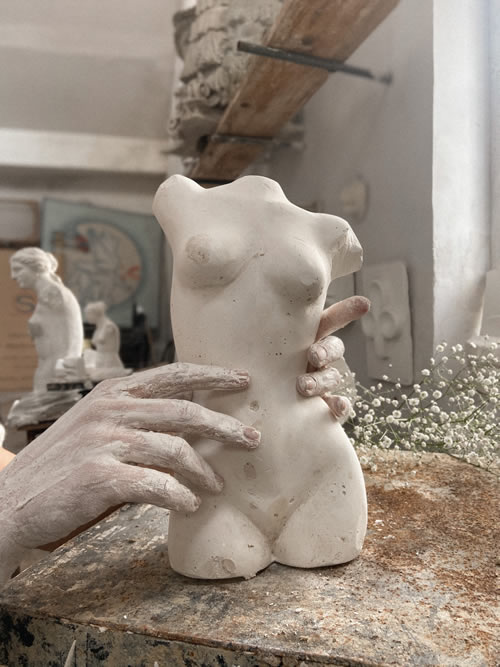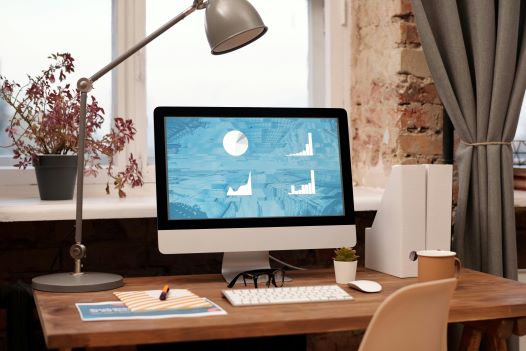Getting started as an art collector is easier than you might think and a fantastic hobby that can be quite lucrative as well. You’ll want to do some planning and establish your goals before you buy your first works of art, however.
You’ll find great resources here at ETChster including how-to articles and an app that teaches you how to track and maintain your collection.
Here is our art collectors guide that holds more information.
Determine Your Art Budget

An art budget can be developed from different angles depending on your situation. Let’s discuss some scenarios that may apply to your needs.
Moving Budget
Whether you are swapping one primary residence for another or adding an additional home or office to your existing holdings, you’ll likely need a “moving budget” and should carve out part of it for amazing original artwork to make your surroundings special. This type of budget is more like a project budget than ongoing resource allocation.
You’ll want to come up with requirements for the new space so that you have enough works of art that fit your aesthetic desires. You’ll want to be sure you’re on the same page with your interior designer so that you end up with complimentary colors.
Allowance
Let’s say you aren’t yet one of the “money is no object” types of art collectors but want to start investing in art. An allowance is a great approach.
Look at your overall monthly expenses and what you can safely set aside with no impact on your lifestyle. This pool of money is commonly referred to as “discretionary” funds. You’ll want to pick a number that makes sense for you. Depending on the price point of works you want to buy, you’ll simply save multiple months until you have enough in savings to add a new piece to your collection.
Investment Allocation
If you are looking at how to become an art collector for more than decorative motivations, you’re probably thinking about the appreciation potential of art as an asset class. How does original art fit with other types of investments you are making such as mutual funds, ETFs, precious metals, or other holdings?
When you sell a piece for a profit, you’ll owe capital gains tax in many countries. Will you then reinvest the gain, the principal or both in more art?
More and more analysis of art appreciation is becoming available, and for those that can’t yet afford a masterpiece, there are ways to purchase shares in holding companies that pool investor money for such purchases.
Do Your Research
So you have your budget together. Now it’s time to identify the next pieces to add to your collection.
As mentioned in other articles, if you plan to use an art buyer, you’ll want to be sure they understand the characteristics of the pieces that you are seeking such as artist, movement, time period, etc.
You may leverage a number of ways to buy art. Living artists have profiles in art communities like ETChster or may maintain a website. Hopefully, they are showing addresses where you can physically see pieces for sale on display.
If you haven’t already, you may want to get to know the local art galleries and what they have available. Do a Google search and be sure you don’t have any accusations of unsavory business practices.
If you’re seeking the most desirable and expensive art, then you may need to get an understanding of what will become available via auctions by Christie’s, Sotheby’s, and similarly renowned art institutions.
For your new purchases, you’ll want to understand how they fit with your existing collection. Are you seeking more art by an artist that you already own? Is this a new artist that fits with a theme in your collection?
As you identify potential pieces, you’ll need to get a feel for the asking price and whether or not you feel it is justified. You’ll want to be sure you can establish provenance for any potential additions. The last thing you want to deal with is a fraud trying to sell fake Basquiat paintings.
Lastly, you’ll need to know how and when you can actually purchase and take possession of the pieces that you decide are a fit for your collection.

Make a Plan
So you have your budget decided and you’ve researched your first purchases. Have you thought about the rest of the equation?
As an art investor, you’ll want to preserve the value of your purchases. Will you purchase and transport pieces to your home yourself? This approach might work fine if you are buying locally. If not, you’ll want to arrange to package the pieces and then transportation to the destination of your choice, preferably via an insured method of transport.
Once you take possession, you’ll want to be sure you take great care of your collection. Having either a climate-controlled storage space or your personal gallery ready to go prior to delivery is a must. Remember that excess moisture, sunlight, pests, children, etc. can damage your art.
What about a fire? You’ll want to have an accurate inventory of your owned pieces, proof of purchase, and photos together so that you can insure them.
Ideally, your collection will start to grow in value. You’ll want also want to make a plan for its future. Will it pass to your heirs or should your collection make its way to museums? You should document your intentions for each piece in an art-collecting app like ETChster to avoid complications.
At any time, you should have a complete inventory of your art collection at your fingertips, preferably in the cloud.
Buy From Serious Artists

As you start your art collection, your first priority should be to buy art that you love. However, if you want the best chance of building a collection that grows in value, you’ll want to invest in collectible artists.
For mid-career artists, your research will have told that you have a serious artist under consideration. They have:
- Been shown in galleries.
- Been collected by others.
- Had installations.
- Be currently on display in known public places.
There are plenty of other tell-tale signs that you’re buying an artist who is serious.
What about someone who is virtually unknown? You might be taking a risk, but there might be a bigger reward. First of all, how would you assess their talent? Are they technically gifted? Are they breaking new ground? Do they have a story that will interest others?
While talent is important, can you tell the desire to build a career is there? Hobbyist artists almost never become collectible. A serious artist will be producing new work, building a network, maintaining a serious profile online, and otherwise putting off signs that they understand how to pursue the art business.
Conclusion
We hope this article helps you better understand how to become an art collector. It’s a fantastic way to blend investment and pleasure.
You’ll find excellent resources for art collectors here at ETChster including an application that makes the administrative side of collecting simple: loan tracking, location tracking, provenance, document management, insurance management, estate management, etc. You’ll also find a friendly community of other art collectors so don’t be afraid to ask questions.
Lastly, you’ll find original artists from all over the world posting new works to the community daily. Find the artists you want to collect and be sure to follow them, so you get the first opportunity to purchase pieces that would make good additions to your art collection.
What’s Next?
Did you:
- Have follow-up questions?
- Have other related thoughts that might be beneficial to the community?
Post them in the comments!
Are You a Visual Artist?
Get the art catalog app and connected, maintenance-free website your art business deserves. Forever Free & Pro versions.
Are You an Art Collector?
You’ll have access to a marketplace of global artists and phenomenal tools to organize your art collection. Forever Free & Pro versions.
You Might Also Enjoy…

Mastering the Art Sales Funnel: Transforming Strangers into Buyers

Picture Perfect: Crafting a Profile Photo Strategy for Etchster

Ensuring Credibility: A Checklist for Our Brand New Etchster Website


